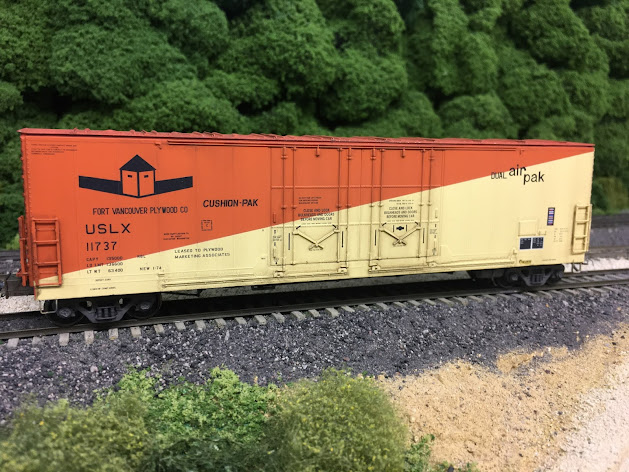Perusing pictures of freight cars occasionally provides me with inspiration. Such was the case recently with an Atlas 53' Evans double plug door boxcar that I purchased some years ago. I bought it used and wasn't sure at the time if the paint scheme was correct or not. As I found out later, Atlas does a pretty good job of replicating prototype paint scheme and this car is a very good representation of the prototype. I stumbled across a few photos of this car on the Internet and it appeared to have a painted roof, or at least a significant amount of overspray of the orange on the sides. I didn't recall that being the case with the model, so I grabbed it to compare to the photos. Sure enough, the Atlas roof is painted to represent galvanized steel. It occurred to me that I could mix up a color close to the color on the sides and paint the roof. So armed with a little inspiration, I set off to get this car on the railroad.
The first step was to add cut levers. Plano Model Products makes a number of variations of the type used on cushioned underframes and this particular car has the Stanray style sliding cut bar. These come as a kit with five separate pieces for each lever. Having never built these before, I was a little apprehensive. However, everything fit together perfectly and the kit was much easier to construct than I anticipated. The photo below shows the cut bars.
After adding A-Line stirrup steps, I painted the trucks and underframe with Rust-Oleum Weathered Wood color Roof Accessory Spray paint. This line of paint is dead flat and comes in several colors that are great for model railroading.
Next, I masked off the sides and ends and painted the roof. The color isn't an exact match, but a little weathering goes a long way toward making it appear to be correct. The photo below shows the roof.
I added an ACI label, sprayed the entire car with Dullcote, and then weathered it lightly using artist's acrylics and Pan Pastels. This car was built in 1974 and wouldn't have had time to acquire much dirt and grime by 1976.
This was a fun build and the chance to add some prototype details to a ready-to-run freight car.








